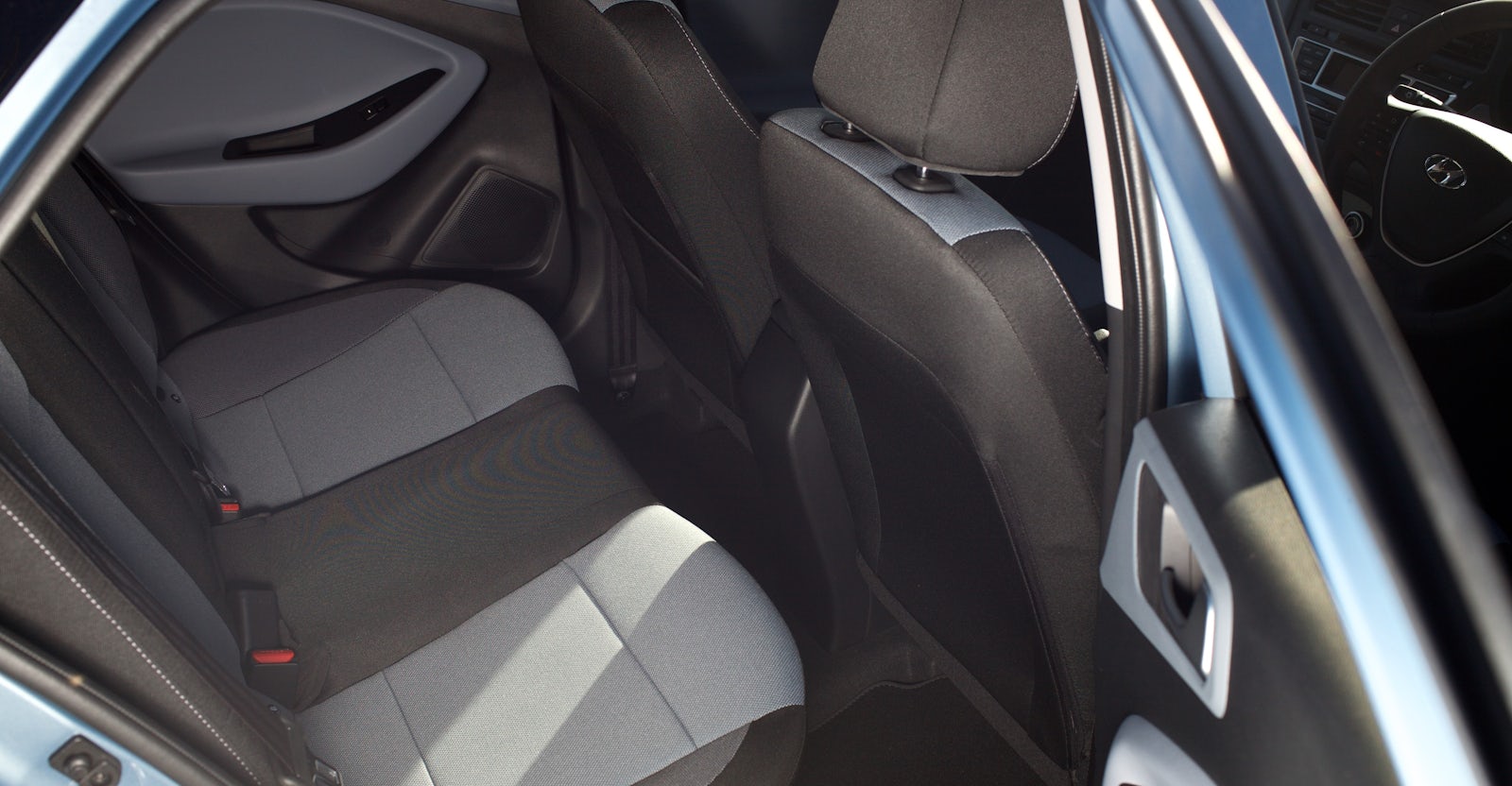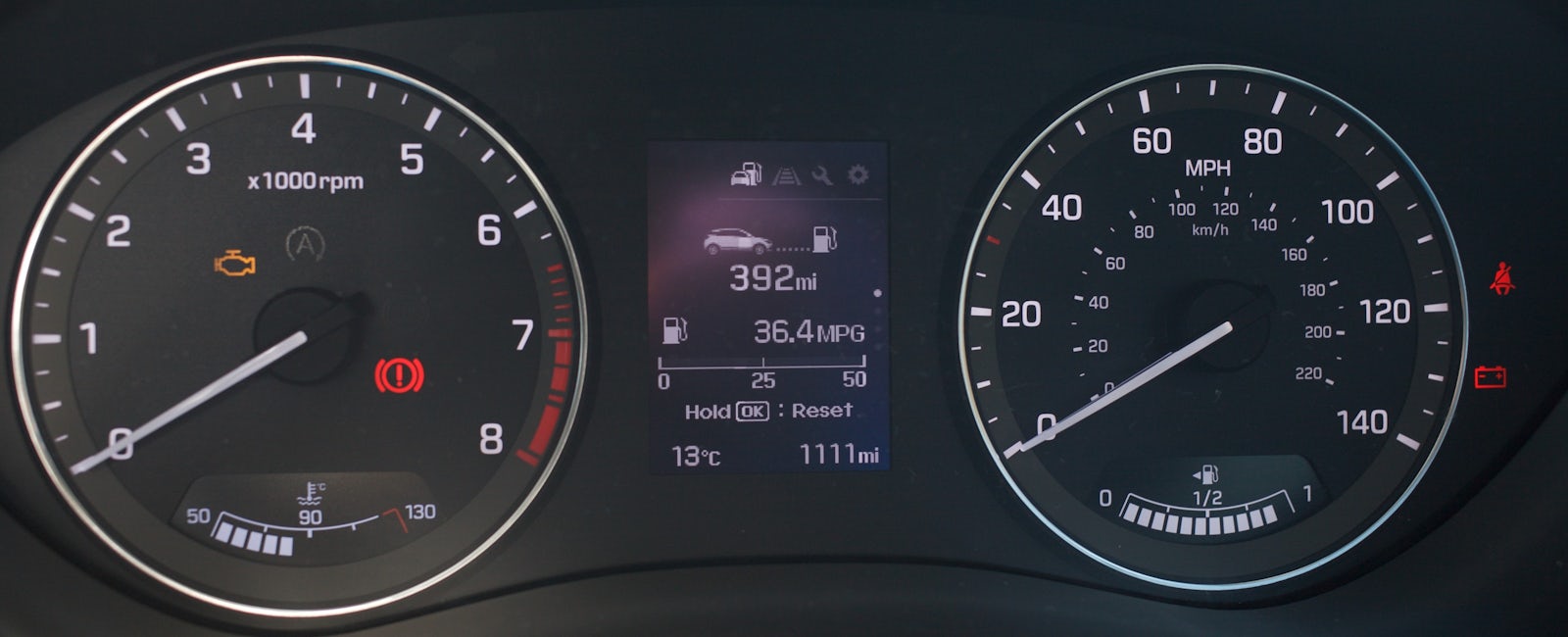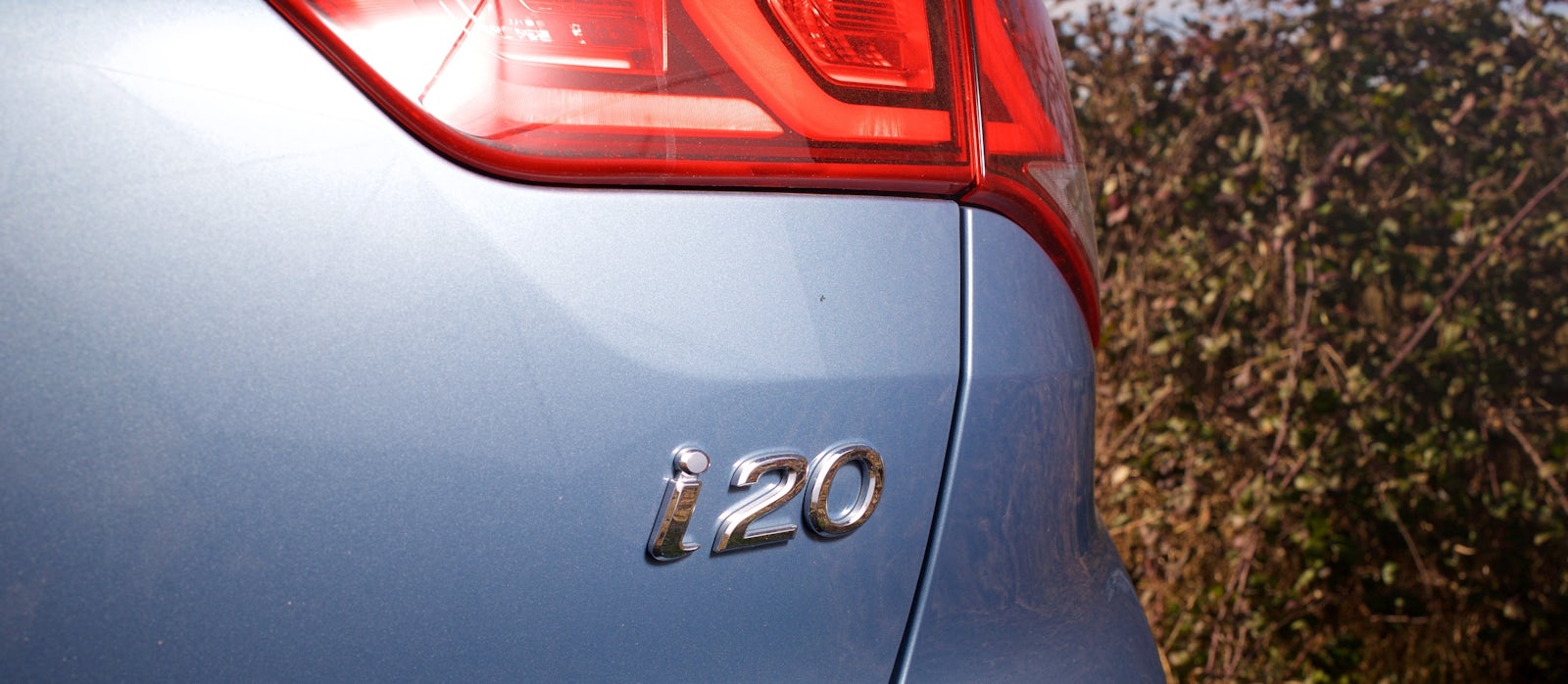At the start of 2015 Hyundai introduced an all-new version of the i20, the Korean brand’s Ford Fiesta and Volkswagen Polo rival. The previous version received muted praise for its space and standard equipment list, and now Hyundai’s going for the throat of European manufacturers with a bold new look and much-improved interior.
We spent a week with the new i20 for sale in Premium trim level with the 99hp 1.4-litre petrol engine to see why small-hatchback buyers should keep the Korean car on their shopping lists – even if it might not have the brand attraction of Ford or Volkswagen.
Its affordable
We have to start with price, simply because Hyundai has always been known for offering low-cost motoring. Fortunately that’s still the case with the new i20, but what’s radically changed is how well equipped the new i20 is for the money.
But you get a lot of toys for your money
Well, we say toys but the i20 – in the Premium trim level version that we’ve tested, at least – has lots of really useful features that you only used to find in cars a class or two above. Things like heated door mirrors that fold in automatically when you lock the car, rear parking sensors, a lane departure warning system that beeps when you stray across lanes on a motorway without indicating, and also hill-hold control. The latter’s useful for taking the stress out of hill starts, holding the car on the brakes for a second or two while you transfer your foot from the footbrake to the accelerator to pull away.
Premium trim cars and above get rain-sensing wipers and automatic headlights, as well as cornering foglights. These light up the foglight on the side of the car that corresponds to the direction you’re turning: take a left turn at a junction and you’ll see the left-hand kerb illuminated as you swing around the bend – it works better and illuminates more than the same system on some more expensive cars.
The kit list goes on too: there’s a proper climate control air-conditioning system, LED front and rear running lights (great for shouting ‘I didn’t buy the cheapest trim level’ to other road users), tinted privacy class on the rear side windows and tailgate window, and also an auto-dimming rear-view mirror. We tested a £32,000 Audi last year that didn’t have one of those, so kudos to Hyundai for thinking of anyone driving at night.
Think Korean cars have rubbish interiors? Things have changed
Our test car’s interior is an entirely comfortable and airy place to sit. You get a leather steering wheel with buttons for cruise control, voice recognition, media and radio volume controls and for changing the car’s systems on the screen between the rev counter and speedometer.
There’s also a leather-coated gear knob (which has a pleasingly chunky action when changing gears), light blue seats and a cream-coloured roof lining that keeps things bright in the cabin. All of our testers are taller than 6’3″, and we still had a couple of inches between our thinning hairlines and the roof of the car, so there’s plenty of room, and you’re not squished up embarrassingly close to your front-seat passenger either.
Stretch out to feel the dashboard plastics and you’ll find impressively posh-feeling soft-touch plastics that squidge slightly when you press them – it’s a small touch but one that makers of small, cheaper cars are realising makes the whole interior feel a bit more expensive. We didn’t find any rattles during the week of driving the i20, although our example only had 1,000 miles on it.

It’s impressively refined on the move
At a 70mph cruise the 99hp 1.4-litre, four-cylinder petrol is quiet, and other than a quiet rumble of road noise the cabin is a quiet place to be. It does feel like the car is happiest within legal UK motorway speed limits because wind noise increases quite noticeably as you approach 80mph – and fuel economy drops rapidly from around 45mpg to 30-35 too.
We took several passengers for rides in the i20, and the common first impressions were that the car rides comfortably and quietly around town – only sharper jolts such as joins in motorway surfaces thud into the cabin. Your normal UK road imperfections such as cracks, drains and speed bumps are dealt with smoothly – Hyundai focused on improving the ride for European roads with this latest version and their work has paid off.

Hyundai’s sorted the small things
Small hatchbacks are likely to spend much of their time in urban traffic jams and leapfrogging from one set of traffic lights to another, so it’s heartening to find that the i20 is smooth and easy to drive slowly. The clutch and steering are both light, and there’s none of the need for loads of revs when you’re pulling away that you sometimes get with smaller petrol engines. The 1.4-litre petrol is also available with an automatic gearbox.
This shouldn’t be a problem for anyone buying an used i20 for sale, however, because the brand is introducing a turbocharged three-cylinder engine later in the year that should give the i20 more go.

As a result of the flogging you have to give it, we struggled to get near Hyundai’s claimed combined fuel economy of 51.4 – our best was 47mpg on an hour-long motorway run along the M3, itself shy of the 61.4mpg extra urban that Hyundai suggests. Around town economy dropped to mid 30s.
Sensible sat-nav solution
You don’t get built-in sat-nav in an i20 until you get Premium Nav trim level. However, plump for our car’s Premium trim level and you get a smartphone docking station plumbed into the dash. It looks a little like an aftermarket bolt-on, but it’s wired in seamlessly to the car’s electrics, so you can slot your smartphone in and have it charge on the move.
Naturally, this also means you can use any sat-nav apps on your smartphone in the car, meaning that you can save on the cost to get the built-in seven-inch colour touchscreen.

There’s no DAB radio
Hyundai may have endowed all trim levels of the i20 with a USB socket for plugging in your music devices – and SE models and above get a Bluetooth connection for wireless music streaming – but the glaring omission in the i20’s media arsenal is DAB (digital) radio. In this day and age we’re used to small cars offering us a greater range of stations than the traditional analogue airwaves offer, and given the i20’s otherwise impressive list of kit, it’s a bit of a stinker.
You can fit lots in the boot
The i20’s boot space beats that in the Fiesta and Polo. The Hyundai has 326 litres, topping the Volkswagen’s 280 and Fiesta’s 290 (or 276 if you have a spare wheel in the Ford). In fact, the only similarly sized car that has an ounce more boot space is the Skoda Fabia.
Pick an i20 SE or higher trim level and you get a fashionable split-level boot floor. There’s not acres of space under the variable floor and the space is quite shallow (a baked bean tin turned on its side would fit), but it’s useful for objects you want in the car at all times without encroaching on normal every-day boot space.

No comments:
Post a Comment